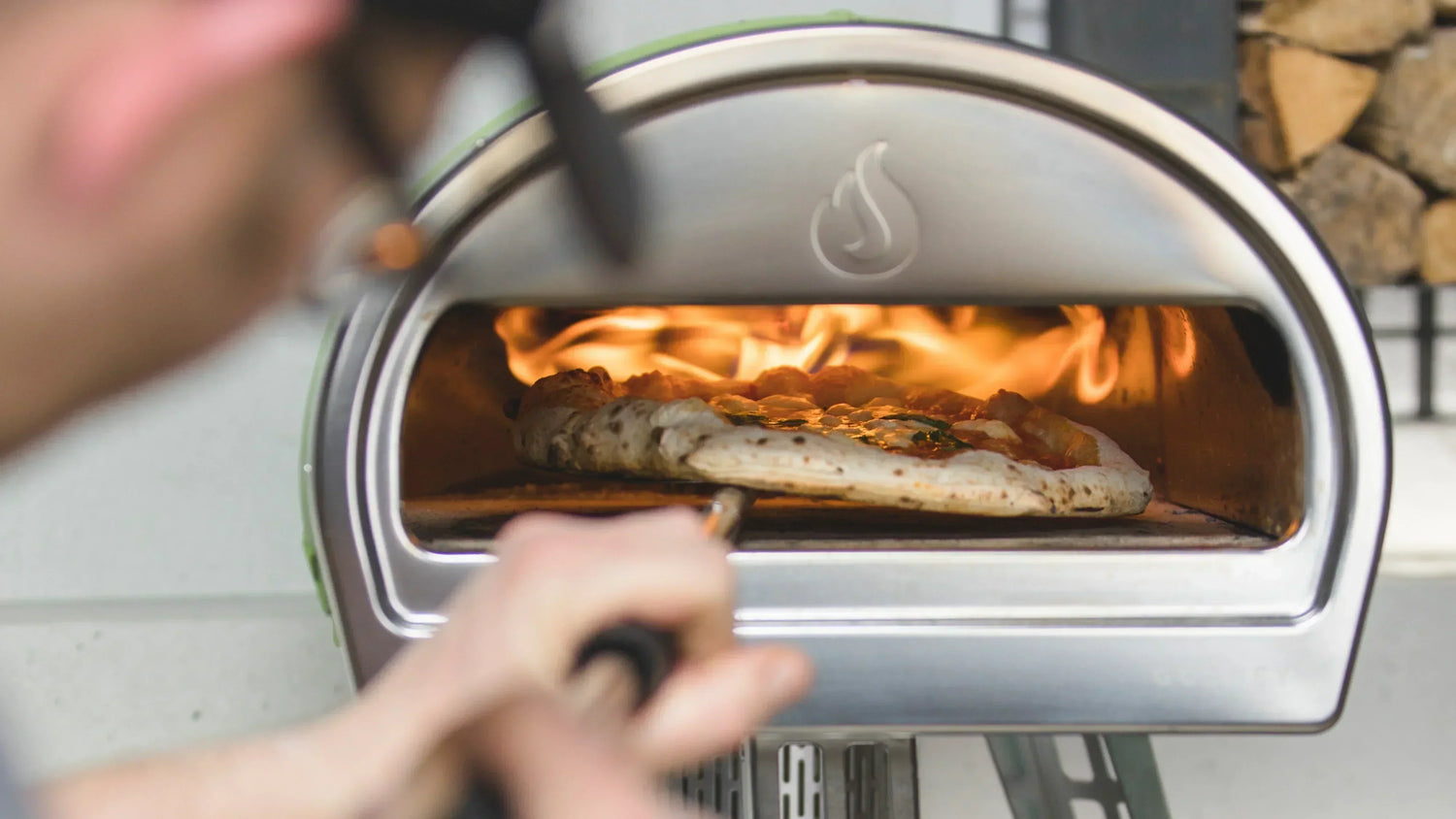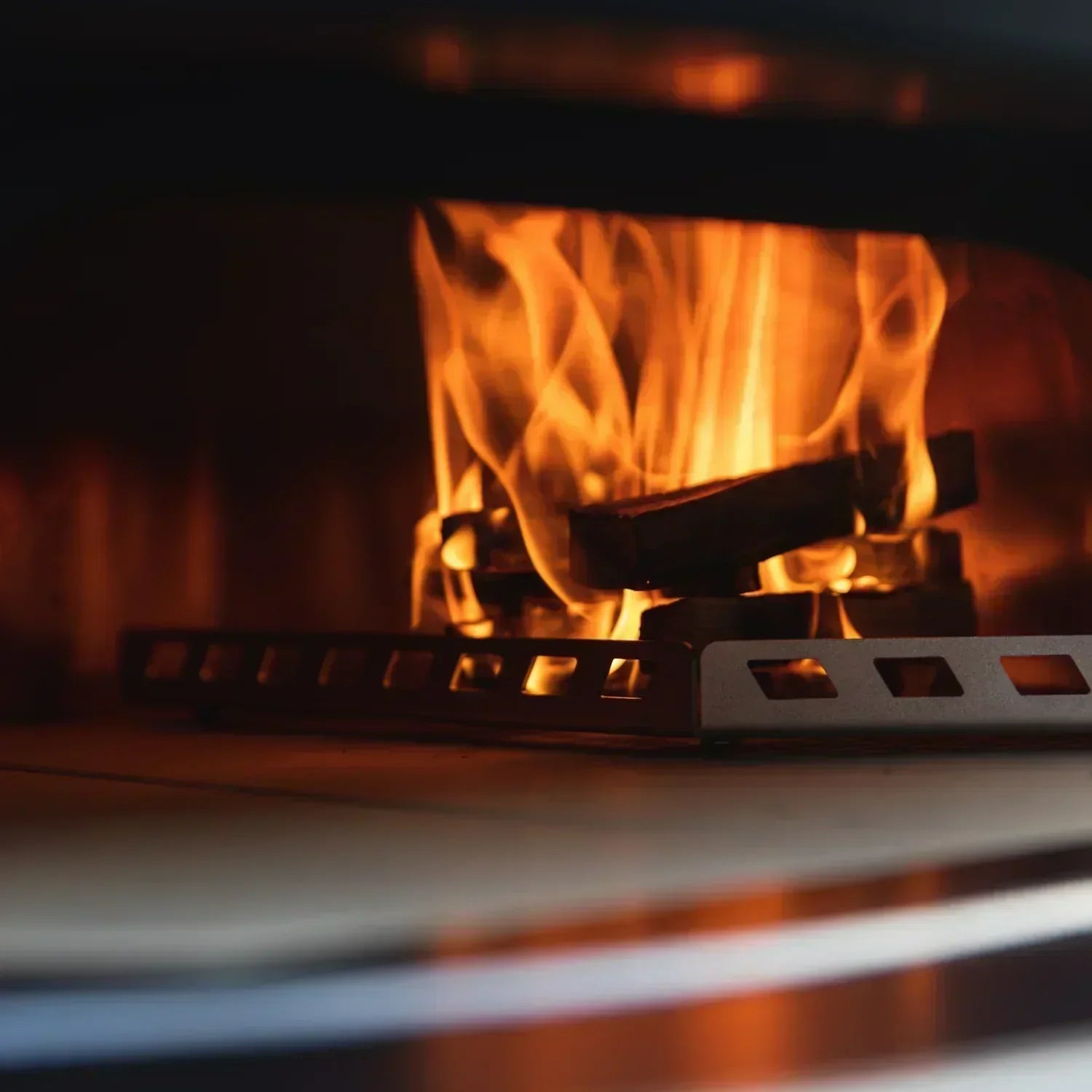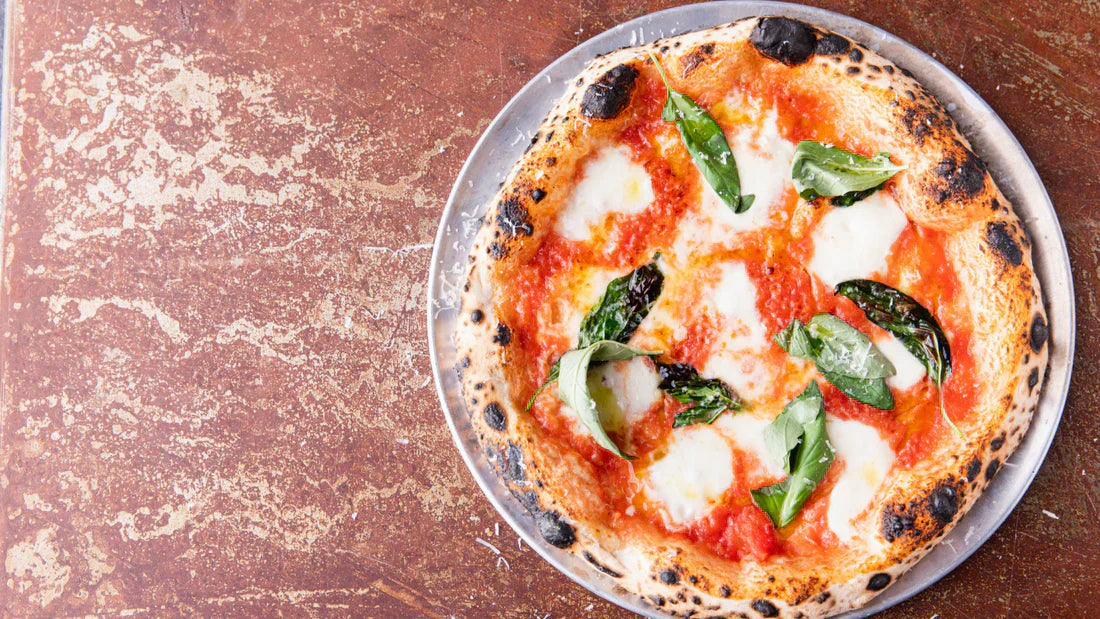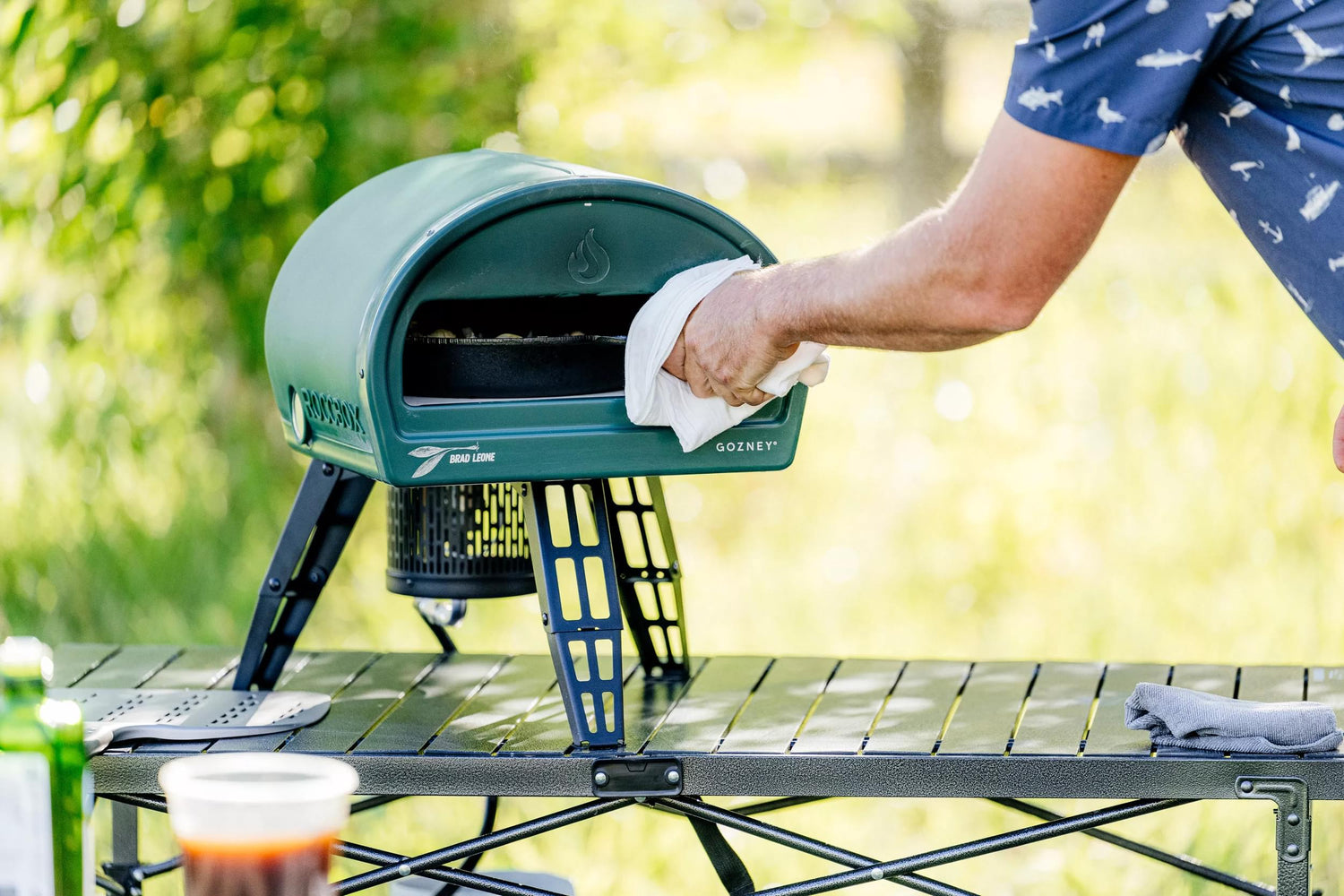When team Gozney invented Roccbox, we had Neapolitan pizza on our mind a lot (and we still do most days!) so, in all honesty, it’s kind of a happy accident just what an incredible job it can do baking New York style pies! Our development chef Joe Boiling talks you through his (very tasty) journey to discovering how to bake the perfect New York pie in Gozney Roccbox…
A lot of pizza styles have a number of ‘rules’ or ‘guidelines’ that help us replicate them at home; Neapolitan pizza should only contain 4 ingredients in the dough, for example, Detroit style pizza should be topped with Wisconsin brick cheese and baked in a traditional blue steel pan, but New York style pizza has no such guidelines. A definitive New York style pizza recipe doesn’t exist, so I set about developing the Gozney vision of a NY pie…
Full disclosure at this point; I have never been to New York City. I have never eaten a single slice of pizza in New York. Are you still reading? Good. Because I’ve never been to Naples either but that doesn’t mean I can’t make a darn good Neapolitan pizza! From reaching out and speaking to New York pizza aficionados I knew that these things are important:
- The crust should be crisp but pliable; a good New York style pizza slice should crack and fold but never break.
- You don’t want leopard spots - but you do want some bits of char on an otherwise tanned brown crust.
- You want some chew and a slice should be able to hold its own weight - a little droop is important but you don’t want toppings falling all over the place.
- The base should be lightly charred and crispy - but not TOO crispy (this isn’t a cracker style crust)

Flour & Dry Stuff…
New York style pizza dough tends to be heartier than its Neapolitan cousin and this is often down to a blend of flours used in the dough. New York doughs can contain bread flour, wholemeal, rye, spelt - pretty much any flour! I didn’t want to descend down a flour based worm hole and, after a few tests, I settled on a blend of wholemeal flour, bread flour and 00 pizza flour (in this case, Molina Dallagiovanna but it works great with Caputo or any brand really).
The 00 flour gives the dough the elasticity I need to open the pizzas by hand (some pizzerias in New York will use a rolling pin - or even wine bottles!) whilst the bread and wholemeal flours will help achieve a crust that is packed full of comforting, light flavours and beautifully speckled and tanned with just the right amount of charred bits.

My next dry ingredient was salt. I decided early on I would just treat salt almost identically to my Neapolitan formula initially and work back from there. Although the dough worked perfectly well with the same percentage of salt initially, once I started adding toppings (particularly cheese, more on that later) I decided to drop the amount slightly to ensure my dough balanced with my topping choices perfectly.
Wet Ingredients…
There’s an argument to be made (mainly by native New Yorkers) that the single most important ingredient in New York style pizza dough is the water - mineral rich New York tap water. And this may be true (I don’t know, I live on the south coast of the UK and the shipping costs for getting NY tap water delivered to my house were excessive). So although I can’t tell you whether or not the NY water rumour is true, I can tell you, hand on heart, that you can make great NY pizza with whatever water you have on hand!
Olive oil was present in every single recipe I saw, spoke about or watched being made so I included it mine to aid the finished texture of my base and crust - as well as making it one of the friendliest doughs to work with I’ve ever made!
How Long…
Most doughs seemed to be cold fermented (meaning in the fridge rather than at room temperature) and low on yeast. It also seemed common to treat the dough as a ‘straight dough’ (meaning it is mixed and balled rather than bulk fermented) and I found all these things to work well, deciding to give the dough a simple one hour bench rest before balling.
Scar’s pizza in New York is renowned for making some of the best pizza in the City and Scar does something pretty unusual when balling his dough. He will brush a counter with oil before dividing the dough up and laying the divided dough on the oiled surface before balling. I found this to be a game changer for my NY dough - not only does it help with creating perfectly uniformed dough balls but it also aids our crispy-ish crust, assists the tanning AND makes the dough super easy to open.
Toppings…
I’d decided on pepperoni when I started this project - it reminded me of Teenage Mutant Ninja Turtles and pretty much every pizza I’d seen on the big screen at the cinema so it felt kind of glamorously New York-ish.
My tomato sauce journey was a simple starting point of cooked or not-cooked. It seemed it was a pretty 50/50 split amongst experts and I felt the non cooked tomatoes kept a brightness to the pizza that I really liked but, it works with either. We produced an incredible cooked down tomato sauce with our Detroit pizza recipe here should you want to go that route but I went with the Neapolitan style of tinned San Marzano’s, a good pinch of salt and a brief hand blend pulsing for my final pizza and I’d encourage you to do the same. But, yeah, it’s up to you really - it’s a recipe, I’m not a dictator!

Low moisture mozzarella seemed to be used by pretty much all the pizzerias and it made sense for my pizza too - the bake times I settled on in Roccbox kind of demanded it - and I went for a split of grated, and sliced pieces. This was mainly for appearance purposes (pretty sure it’s what Michelangelos looked like in TMNT) but be warned, I tried a LOT of mozzarella, and they’re definitely not all created equally. Be prepared to play around and find a brand that works for you. And please, no pre grated stuff, it’s normally coated with an anti clumping agent that makes it less than ideal for pizza.

Lucky American folk have access to ‘cuppin’ Roni’, a type of pepperoni that naturally cups as it cooks but, apparently, the processes used to make this stuff aren’t allowed in the UK. This disappointed me, as I wanted the little pools of fat in the charred cups of meat.
I was prepared to change to a margherita (the OG, the Queen, the classic, the one I'll always order to test out a place's dough) but… I really wanted the Roni cups! Thankfully, after much trial and error, we found extremely fatty, freshly thinly sliced Iberico Chorizo performed in a similar way and my dream was salvaged!

Although often cooked in deck ovens some New York places still cook on wood fired ovens so I was hopeful the environment in Gozney Roccbox could bake me a pretty accurate version of an NY pie but I was (and continue to be) blown away by how good it actually was!! All 4 points I wanted to check off at the top of the article were all checked off and then some!

My final pizza was crispy (but definitely not too crispy), pliable (meaning I could bend the slice without cracking it) and contained just the right amount of chew. By heating Gozney Roccbox up and turning the flame down a few minutes before baking I was able to produce a stunning lightly charred base whilst getting the crust to look just how I wanted; a few charred bits without proper defined spotting.

Every time someone tries this pizza they comment on it. Never a negative comment, but always different comments. Some comment on how ‘different’ this style is to Neapolitan, a LOT say how they prefer this dough to Neapolitan but there’s one thing they have pretty much all said, ‘I Love this pizza’. Get the recipe here.








